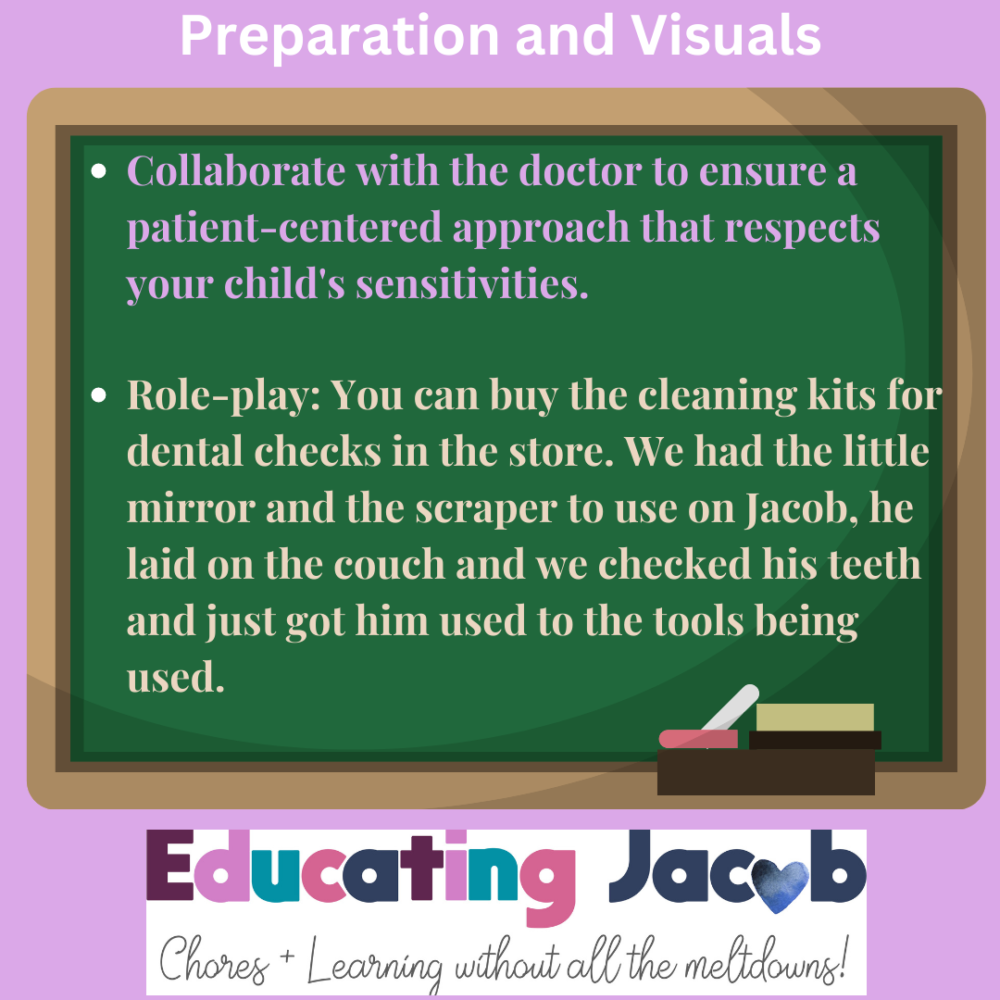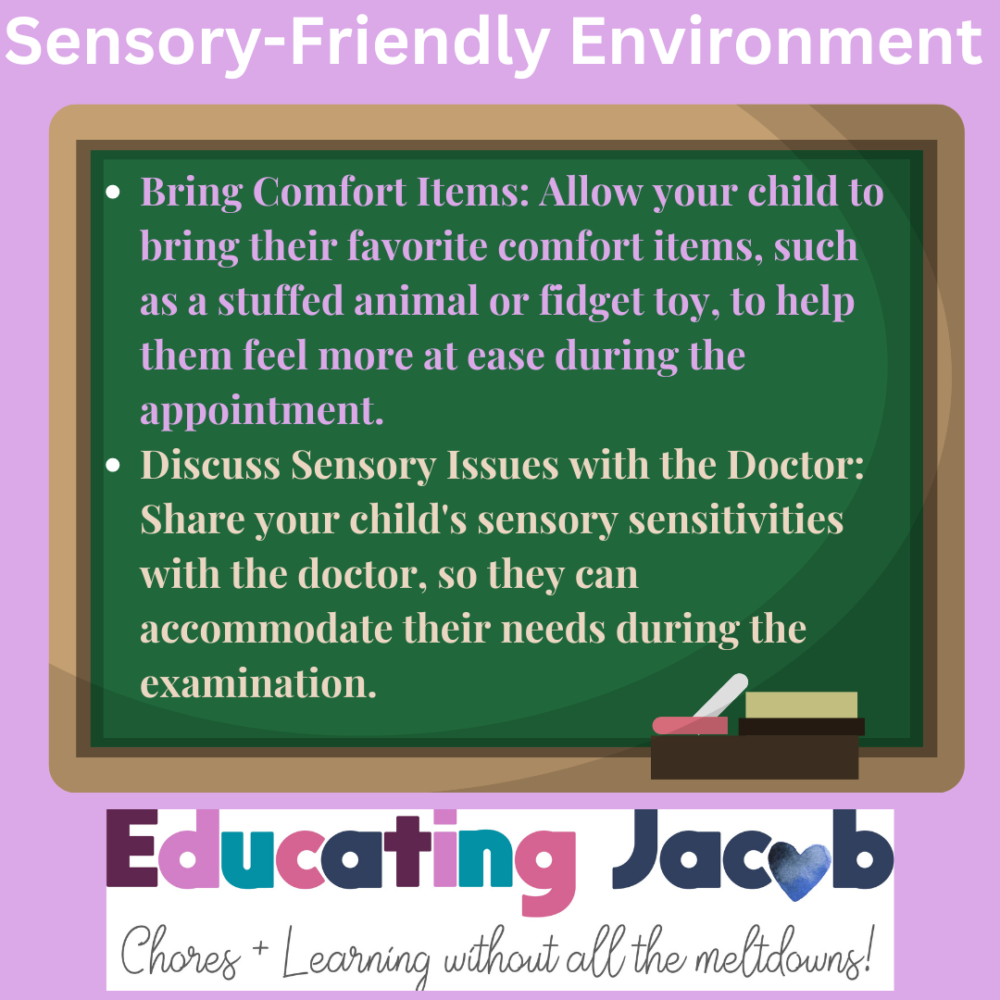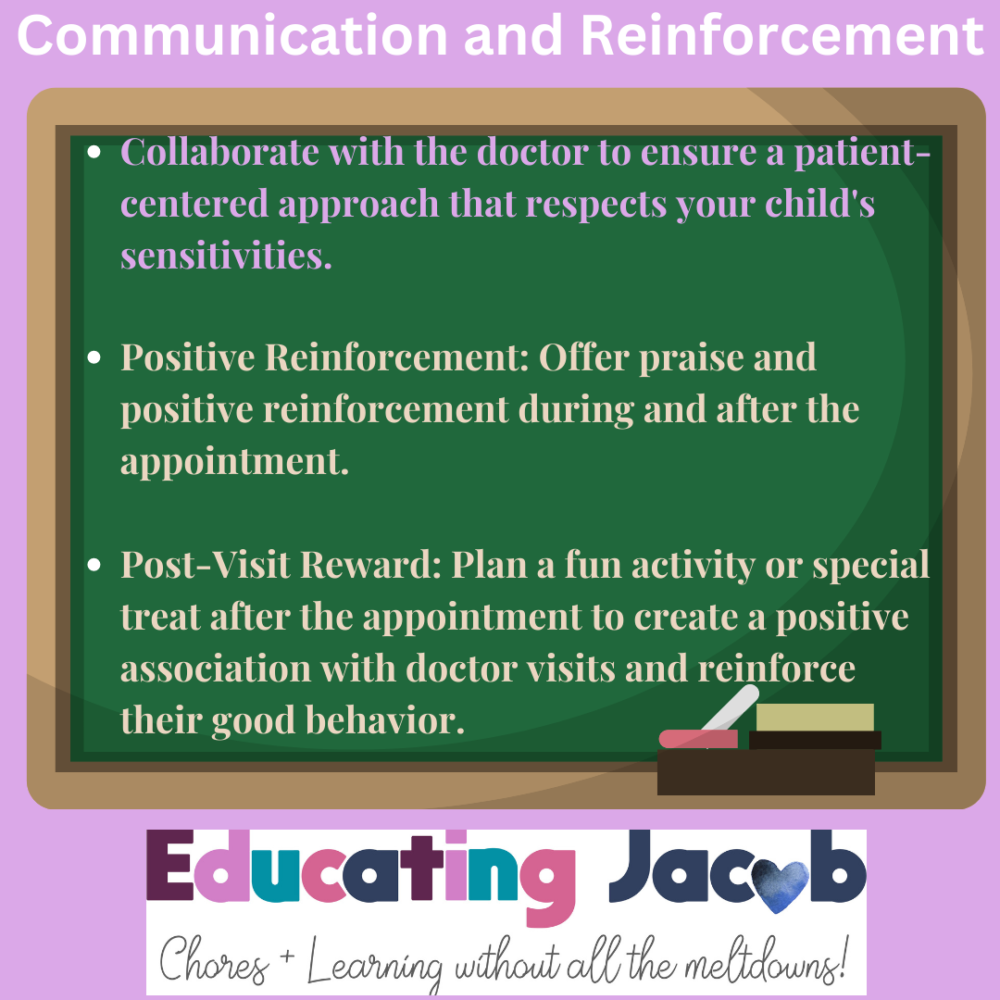3 ways to help your child on the autism spectrum navigate doctor visits more smoothly

3 ways to help your child on the autism spectrum navigate doctor visits more smoothly
Navigating doctor visits with a child on the autism spectrum can feel like a battlefield. The meltdowns and sensory overload can create a storm of stress and uncertainty. But guess what? You’re not alone, and there are ways to turn this challenging experience into a smoother one. Let’s delve into a comprehensive guide on how to make doctor visits easier for your child on the autism spectrum.

Preparation and Visuals
First, you should, Prepare in Advance. Inform your child about the upcoming doctor’s appointment in advance. Use simple language and provide details about what to expect during the visit. You can search you tube for videos showing the type of doctor you’re going to see. Or you can make a video with your spouse or another family member on what to do when visiting the doctor.
Use Visual Supports: Utilize visual schedules, social stories, or picture cards to help your child understand the sequence of events during the appointment. Visual aids can reduce anxiety and provide a sense of predictability.
Role-Play: Role-play the doctor visit at home, taking turns being the doctor and the patient. This practice can familiarize your child with the process and ease their apprehension. We did this and it really helped with the dental visit. You can buy the cleaning kits for dental checks in the store. We had the little mirror and the scraper to use on Jacob, he laid on the couch and we checked his teeth and just got him used to the tools being used.

Sensory Considerations
Second, you should consider: a Sensory-Friendly Environment: If possible, request a sensory-friendly waiting area or examination room for your child. Dim lighting, comfortable seating, and quiet spaces can make the experience more comfortable. Back when Jacob was diagnosed on the spectrum they did not exist in my area. We now have theaters and other businesses that are trying to include our children but I didn’t know of any when he was younger. I would take a bag with sensory items, tablets, books, coloring books etc.
Bring Comfort Items: Allow your child to bring their favorite comfort items, such as a stuffed animal or fidget toy, to help them feel more at ease during the appointment.
Discuss Sensory Issues with the Doctor: Share your child’s sensory sensitivities with the doctor, so they can accommodate their needs during the examination.

Communication and Reinforcement
Third, you need Clear Communication: Communicate with the doctor about your child’s unique needs and challenges. Collaborate with the doctor to ensure a patient-centered approach that respects your child’s sensitivities. When Jacob was small his doctor barely knew him because I was given other doctors to see when the appointment rolled around. I paid for a consultation visit and only saw his assigned pediatrician after his diagnosis so that Jacob would have someone who knew him.
Positive Reinforcement: Offer praise and positive reinforcement during and after the appointment. Celebrate your child’s cooperation, whether it’s for sitting still during an examination or following instructions.
Post-Visit Reward: Plan a fun activity or special treat after the appointment to create a positive association with doctor visits and reinforce their good behavior. For successful visits Jacob would get his tablet early that day, plus breakfast or lunch wherever he wanted after the visit if he had behaved appropriately.
Remember, every child on the autism spectrum is unique, so tailor these strategies to suit your child’s specific needs. With patience, understanding, and support, you can help your child feel more comfortable and confident during doctor visits. I learned very early into the diagnosis that I didn’t want Jacob to be sedated for dental or simple medical procedures (blood work, shots). So that meant I needed schedules and plans ahead of time to help him be successful.
Jacob’s successful dental visits became possible through gradual exposure. Becoming comfortable with the dental environment prior to the appointment allowed him to navigate the experience with significantly less anxiety.
Jacob’s story exemplifies how these strategies can transform daunting doctor visits into smoother experiences for children on the spectrum. His journey from anxiety to empowerment showcases the potential of preparation, role-playing, and gradual exposure. By incorporating Jacob’s story, we’re not only offering a real-life illustration but also inspiring parents to embark on this transformative path.
Smoother Doctor Visits
Doctor visits no longer need to be a source of dread for your child on the autism spectrum. Through proactive strategies inspired by Jacob’s success, you can pave the way for smoother experiences. Building predictability, embracing familiarity, and harnessing sensory allies empower your child to face doctor visits with newfound confidence. Each step, informed by Jacob’s journey, ensures that your child’s experience is not just manageable but even triumphant. As you navigate this path together, remember that you’re not just shaping doctor visits – you’re nurturing resilience, fostering growth, and ensuring that each appointment becomes a stepping stone toward your child’s journey of empowerment.
Craft a Roadmap to Success
By following these steps, you’re crafting a roadmap to successful doctor and dental visits for your child on the spectrum. It’s not just about navigating the challenges; it’s about rewriting the narrative, turning apprehension into empowerment. Need help with schedules? Check out this blog post or visit my website. https://educatingjacob.com/how-to-create-a-personalized-schedule-for-children-with-autism/
Your journey is guided by empathy, compassion, and a commitment to creating positive experiences. So, let’s navigate those visits together and pave the way for success.
